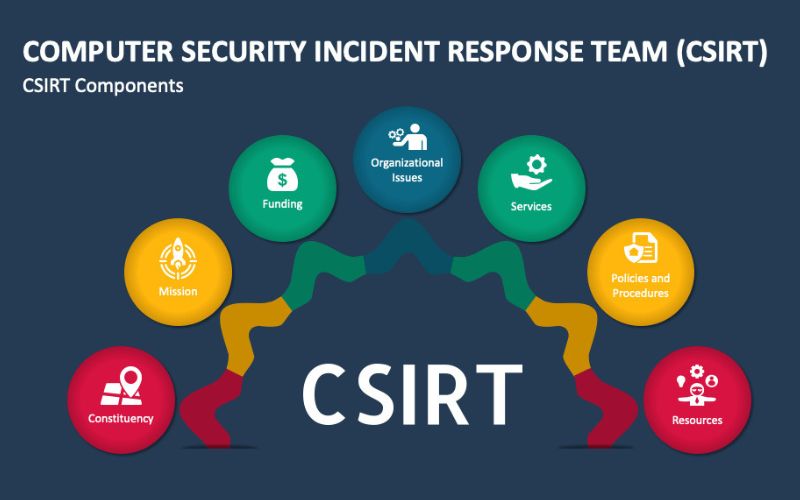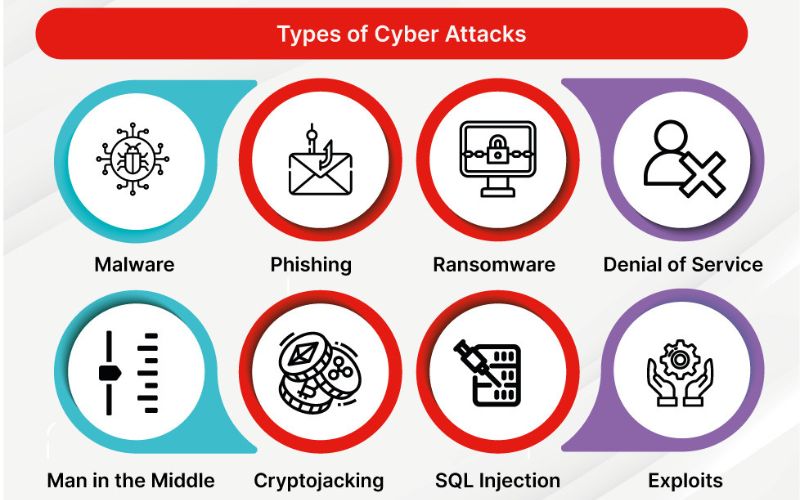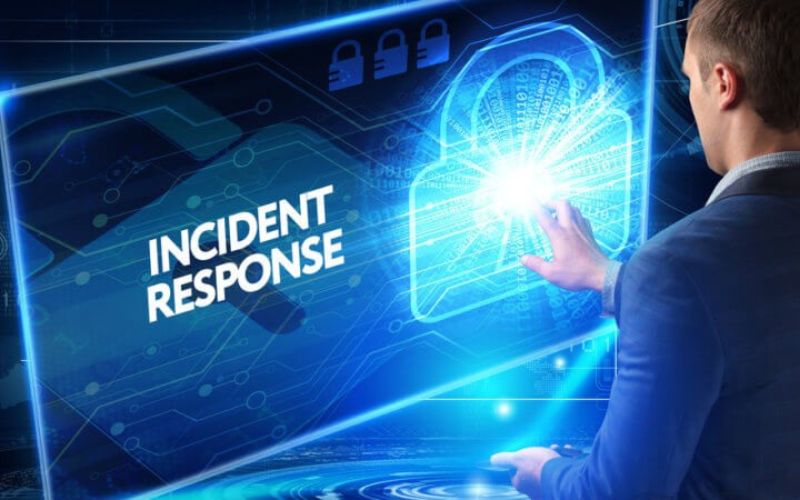Did you suspect a cyber security incident? Knowing how to report it is critical effectively. Promptly reporting suspicious activity can significantly reduce damage and accelerate recovery. This article dives deep into how a cyber security incident can be reported by you, outlining who to contact, what information to gather, and best practices for a smooth and successful reporting process.
What is Cyber Incident Reporting?
Cyber incident reporting is documenting, responding to, and learning from a cyber attack or data breach. It involves reporting the details of a cybersecurity incident, such as when it happened, how it occurred, who or what was affected, and the scope of the breach. Key reasons why cyber incident reporting is essential:
- Maintains regulatory compliance – Many governing bodies and federal governments require prompt reporting of cyber incidents, often within 72 hours. Failure to report can result in costly penalties.
- Helps improve risk and threat awareness – Reporting incidents allows organizations to identify security gaps and build more accurate threat models to prevent future attacks.
- Mitigates major incidents – Understanding vulnerabilities enables implementing processes and controls to strengthen cybersecurity posture and reduce the chances of more severe attacks.
- Builds trust with clients and investors – Having a cyber incident reporting process demonstrates an organization’s commitment to protecting data and digital assets.
The typical process for reporting a cyber incident involves:
- Recording the incident details consistently using a template
- Remediating the threat based on severity and impact analysis
- Reporting the incident to relevant stakeholders in a clear, actionable way
Prompt reporting, even if all details are unavailable, is crucial to contain the breach, minimize data loss, and ensure business continuity. Failing to report incidents can lead to escalation, lack of preparedness, compliance issues, loss of trust, and missed learning opportunities.

When to Report a Cyber Incident
Cyber incidents should be reported promptly, typically within 72 hours of discovery. Here are the key reasons why:
- Maintain regulatory compliance – Many governing bodies and federal regulations, such as GDPR and HIPAA, require reporting cyber incidents within a specified timeframe, often 72 hours. Failure to report can lead to costly penalties.
- Contain the breach – Reporting incidents quickly allows for swift diagnosis and containment of the threat. This minimizes the attack’s impact and reduces the risk of further damage.
- Receive support—Reporting incidents immediately enables organizations to seek assistance from relevant authorities and partners in responding to the attack.
- Improve threat awareness – Sharing details of cyber incidents helps build a better understanding of the threat landscape and enables other organizations to learn from the incident and improve their defenses.
- Maintain trust – Transparent reporting demonstrates an organization’s commitment to protecting data and digital assets, which helps maintain trust with clients, customers, and stakeholders.
It’s important to note that the 72-hour timeframe is optional, as reporting deadlines can vary by industry and country. However, it’s best to report as soon as possible, even if all details are unavailable, and update the report as more information becomes known.

What to include in a Cyber incident report
A cyber incident report should include the following details:
- Contact Information: Provide individual and organizational details, including names, titles, and contact information.
- Incident Details:
- Date and Time: Record the date and time the incident was identified.
- Impacted Systems: Specify which systems are being impacted and whether they are critical to the functioning of your business.
- Impact Description: Describe the impact on the asset, including any known information regarding the cause and any commenced or intended response.
- Initial Estimate of Impact: Provide an initial estimate of the impact, including the duration of any outage.
- Additional Information:
- Known Cause: If known, specify the cause of the incident.
- Response Actions: Describe any actions taken or planned to respond to the incident.
- Damage Assessment: Provide any damage assessment information gathered during the incident response.
- Reporting Requirements:
- CISA: Reports are made to the Australian Cyber Security Centre (ACSC) within 72 hours of becoming aware of the incident for critical incidents and within 48 hours for other incidents.
- DoD: Contractors must report cyber incidents to the Department of Defense (DoD) at http://dibnet.dod.mil within 72 hours of discovering the incident.
- CIRCIA: Covered entities must report to CISA any covered cyber incidents within 72 hours from the time the entity reasonably believes the incident occurred.
- Additional Resources:
- StopRansomware.gov: A resource for sharing information about ransomware attacks.
- www.cisa.gov/report: A portal for sharing information about cyber incidents.
These details are essential for effective incident reporting, which helps identify trends, provide timely assistance, and enhance overall cybersecurity.

How to Report a Cybersecurity Incident
Recognizing a cyberattack is just the first step. Prompt action is critical to minimize damage and ensure a swift recovery. Here’s how to effectively report a cybersecurity incident and the channels available.
Steps to report a cybersecurity incident
Immediate isolation: As soon as a cybersecurity incident is detected, isolate the affected systems to prevent the spread of the threat.
Initial assessment: Quickly assess the scope and impact of the incident to understand the urgency and scale of the response needed.
Notification: Inform your organization’s internal cybersecurity team immediately. If you don’t have one, consider contacting a cybersecurity expert.
Documentation: Document everything about the incident as it happens, including what was affected, actions taken, and any communication, like suspicious emails, phishing attempts, malware logs, or screenshots.
Reporting: Report the incident to the appropriate channels based on the nature and severity of the attack. Provide detailed information about the incident to aid in the response and investigation.
Popular reporting channels
- Government Cybersecurity Reporting Portal: Many governments have established online portals where businesses and individuals can report cybersecurity incidents. These portals often direct the reports to relevant authorities for action.
- Computer Security Incident Response Team(CSIRT): CSIRTs receive, review, and respond to computer security incident reports and activity. They are a reliable point of contact for reporting and getting advice on cybersecurity incidents.
- Law Enforcement Agencies: For incidents that involve illegal activities, such as cyber theft or fraud, it’s crucial to report to local or national law enforcement agencies equipped to handle cybercrimes.
- Network Security Service Provider: If you use a network security service, report the incident to your provider. They can offer immediate assistance and take steps to mitigate the issue.
Provide detailed information about the problem.
When reporting a cyber incident, include as much detail as possible to facilitate a swift and effective response. Here’s what to include:
- Type of attack: Identify the kind of cyberattack suspected, such as phishing, malware infection, or unauthorized access.
- Time and date: Provide when the incident was discovered or when suspicious activity began.
- Impact of the incident: Describe the impact of the incident, including compromised data, system downtime, or financial losses.
- Evidence collected: List any evidence you’ve gathered related to the incident, such as logs, IP addresses, screenshots, or malicious files.

The importance of Cyber incident reporting
Cyber incident reporting is crucial for several reasons:
- Improve Risk and Threat Awareness: Reporting incidents helps organizations understand their vulnerabilities and improve their cybersecurity posture by identifying and addressing gaps in their defenses. This awareness enables them to implement necessary controls to mitigate future threats.
- Build Trust With Clients, Customers, and Stakeholders: Transparency in reporting incidents demonstrates an organization’s commitment to protecting data and digital assets, which helps maintain trust with clients, customers, and stakeholders. This trust is essential for maintaining business relationships and ensuring continued support from partners and investors.
- Maintain Regulatory Compliance: Many regulatory bodies, such as GDPR and HIPAA, require prompt reporting of cyber incidents. Failure to comply can result in costly penalties. Reporting incidents ensures compliance and helps maintain a positive reputation.
- Ensure Prompt Remediation Action: Reporting incidents quickly allows for swift diagnosis and containment of the threat. This prompt action minimizes the attack’s impact and reduces the risk of further damage.
- Protect Business Relationships: Reporting incidents to business partners and stakeholders ensures they know potential vulnerabilities and can take necessary precautions to protect their networks. This proactive approach helps maintain strong business relationships and prevents potential breaches through third-party service providers.
Cyber incident reporting is vital for maintaining regulatory compliance, improving risk and threat awareness, building trust, ensuring prompt remediation, and protecting business relationships.

Where to Report a Cyber Incident
According to the search results, there are a few key places to report a cyber incident:
- To CISA (Cybersecurity and Infrastructure Security Agency) within 72 hours of reasonably believing a covered cyber incident has occurred. This is required under the proposed CIRCIA (Cyber Incident Reporting for Critical Infrastructure Act) rules for entities in critical infrastructure sectors.
- Other federal agencies have an information-sharing agreement with CISA, called a “CIRCIA Agreement.” If an entity is already required to report substantially similar information to another agency within a similar timeframe, they may be exempt from reporting directly to CISA.
- In Vietnam, information system operators must notify the Administrator, National Coordinating Agency (VNCERT), specialized accident response unit, ISPs, and other state agencies within 5 days of detecting a cyber information security incident. If they cannot handle the incident, they must prepare an Initial Report to submit to the Administrator, response unit, and VNCERT.
The search results do not provide specific guidance on reporting cyber incidents in a spa or massage business context. However, any business that experiences a cyber attack or data breach should follow applicable state and federal laws regarding incident reporting and consumer notification.
Who is responsible for reporting cybersecurity?
Cybersecurity is a shared responsibility, and the reporting burden falls on various parties depending on the context. Here’s a breakdown:
- Enterprises: Businesses have a legal and ethical obligation to protect customer data and critical infrastructure. They should have a designated team or individual responsible for reporting cybersecurity incidents to relevant authorities and internal stakeholders.
- Government agencies: Government institutions are prime targets for cyberattacks due to the sensitive data they handle. Dedicated cybersecurity teams within these agencies are responsible for identifying, reporting, and responding to cyber incidents. They may also collaborate with national CSIRTs or law enforcement for large-scale attacks.
- Individuals using the Internet: While individuals may not have a formal reporting requirement, they play a crucial role in maintaining cybersecurity hygiene. If you suspect a cyberattack on your device or encounter online threats like phishing attempts, reporting them helps authorities track malicious activity and develop broader protection strategies.
The crucial role of stakeholders in cybersecurity incidents
Cybersecurity incidents are a complex issue requiring a coordinated response from various stakeholders. Here’s how different parties contribute to effective reporting and handling of cyberattacks:
Internal Stakeholders:
- Security teams: Form the first line of defense, identifying and containing threats. They also lead incident response, investigation, and recovery efforts.
- IT teams: Provide technical expertise to isolate compromised systems, restore impacted services, and implement security patches.
- Management: Approve resources for incident response, make crucial decisions regarding disclosure and communication with stakeholders, and ensure compliance with regulations.
- Employees: Everyone within the organization plays a vital role. Raising awareness through training programs helps employees identify red flags and report suspicious activity promptly.
External Stakeholders:
- Customers: Organizations are responsible for informing customers if their data is compromised in a cyberattack. Transparency and clear communication are critical during such situations.
- Law enforcement: In severe cases involving data breaches, ransomware attacks, or cyber espionage, reporting to law enforcement can assist in investigations and potential legal action against perpetrators.
- Network Security Service Providers (NSSPs): Organizations with managed security services can leverage their NSSP’s expertise for incident response guidance, threat analysis, and remediation strategies.
- National Cyber Security Monitoring and Response Center (CSIRT): CSIRTs offer valuable resources for incident reporting, sharing threat intelligence, and receiving expert guidance on mitigation strategies.
In conclusion, promptly reporting a cybersecurity incident is not just about safeguarding your systems or data. By taking action, you contribute significantly to the collective fight against cybercrime. Early and detailed reports empower authorities to track threats, develop mitigation strategies, and potentially bring perpetrators to justice. Remember, a coordinated response is vital in cybersecurity. So, if you suspect a cyberattack, don’t hesitate to report it through the appropriate channels. For more valuable resources and information on cybersecurity best practices, visit the website Proxy Roating.
>>> See more:
Cyber security basics for beginners
Cyber security roles and responsibilities
